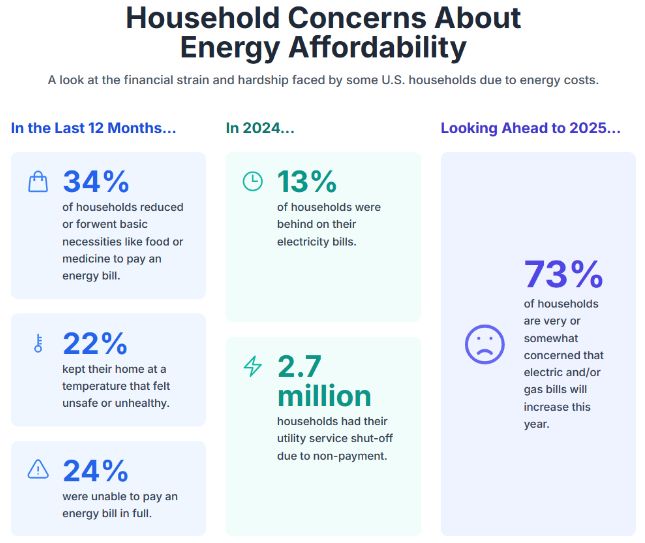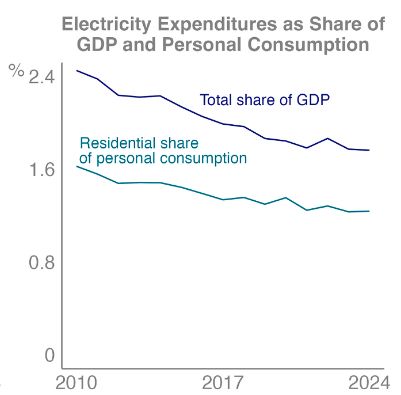
Kevin J. Kircher
@kevinjkircher.com
Engineering prof (mechanical + electrical) at a big Midwest state school. Energy, climate, buildings, power grid, control, optimization, data science. He/him. Personal account. https://kevinjkircher.com/ Email: my last name at purdue dot edu
Not a bad view, walking to work after the first snowfall of the winter.

November 10, 2025 at 3:01 PM
Not a bad view, walking to work after the first snowfall of the winter.

November 10, 2025 at 1:24 PM
9/ We tested the whole toolchain - sensing, communication, actuation, API hooks, prediction and decision algorithms - in an occupied test house that I manage at Purdue.

November 4, 2025 at 4:52 PM
9/ We tested the whole toolchain - sensing, communication, actuation, API hooks, prediction and decision algorithms - in an occupied test house that I manage at Purdue.
5/ Why do HPWH installs often entail electrical work? Most outlets in US housing are 120 V and have a 15-20 A limit, which is not enough to safely power the 4.5 kW resistance heating elements that most HPWHs use if the heat pump alone can't keep up with water demand.

November 4, 2025 at 4:42 PM
5/ Why do HPWH installs often entail electrical work? Most outlets in US housing are 120 V and have a 15-20 A limit, which is not enough to safely power the 4.5 kW resistance heating elements that most HPWHs use if the heat pump alone can't keep up with water demand.
New paper! Heat-pump water heaters could cut energy costs and pollution, but installs often require 💰 electrical work to accommodate backup resistance heat. My student Levi Premer developed prediction and control software to eliminate the need for backup heat and ⬆️ efficiency and flexibility. 🧵1/

November 4, 2025 at 4:28 PM
New paper! Heat-pump water heaters could cut energy costs and pollution, but installs often require 💰 electrical work to accommodate backup resistance heat. My student Levi Premer developed prediction and control software to eliminate the need for backup heat and ⬆️ efficiency and flexibility. 🧵1/
kiddo's new portrait of me just dropped, nailed it imo

October 28, 2025 at 1:21 PM
kiddo's new portrait of me just dropped, nailed it imo
As humans change the climate, largely by burning fossil fuels, the frequency and severity of weather disasters are rising. Climate Central now hosts the billion-dollar weather disaster database that the Trump administration took off NOAA's website.
www.climatecentral.org/climate-serv...
www.climatecentral.org/climate-serv...

October 26, 2025 at 9:09 AM
As humans change the climate, largely by burning fossil fuels, the frequency and severity of weather disasters are rising. Climate Central now hosts the billion-dollar weather disaster database that the Trump administration took off NOAA's website.
www.climatecentral.org/climate-serv...
www.climatecentral.org/climate-serv...
Over the next year or so, big apartment construction projects will increase the number of beds in my town by ~5%. Assuming constant population, how much do you think real rents will change in 2030 vs. 2025?
a) -10%
b) -5%
c) 0%
d) +5%
e) +10%
a) -10%
b) -5%
c) 0%
d) +5%
e) +10%

October 20, 2025 at 2:10 PM
Over the next year or so, big apartment construction projects will increase the number of beds in my town by ~5%. Assuming constant population, how much do you think real rents will change in 2030 vs. 2025?
a) -10%
b) -5%
c) 0%
d) +5%
e) +10%
a) -10%
b) -5%
c) 0%
d) +5%
e) +10%
10. States with more renewable generation tend to have somewhat lower prices, but it's a weak trend. A much stronger trend: Higher dependence on natural gas for electricity generation means higher retail prices. Gas prices often set wholesale electricity prices, which utilities pass through to us.


October 19, 2025 at 9:58 PM
10. States with more renewable generation tend to have somewhat lower prices, but it's a weak trend. A much stronger trend: Higher dependence on natural gas for electricity generation means higher retail prices. Gas prices often set wholesale electricity prices, which utilities pass through to us.
Rising electricity prices are about poles and wires, not energy supply. Nationwide energy generation costs went *down* $10B from 2019 to 2024, while transmission costs went up $5B and distribution costs went up $15B.

October 19, 2025 at 9:53 PM
Rising electricity prices are about poles and wires, not energy supply. Nationwide energy generation costs went *down* $10B from 2019 to 2024, while transmission costs went up $5B and distribution costs went up $15B.
8. For-profit utilities charge 14% more (13.3 c/kWh, 2023 average) than cities (11.7 c/kWh) and 16% more than rural coops (11.5 c/kWh). This trend is accelerating: For-profit utility prices rose 2.7 c/kWh from 2019-2023, 225% more than cities (1.2 c/kWh) and 270% more than coops (1 c/kWh).

October 19, 2025 at 9:51 PM
8. For-profit utilities charge 14% more (13.3 c/kWh, 2023 average) than cities (11.7 c/kWh) and 16% more than rural coops (11.5 c/kWh). This trend is accelerating: For-profit utility prices rose 2.7 c/kWh from 2019-2023, 225% more than cities (1.2 c/kWh) and 270% more than coops (1 c/kWh).
7. Residential customers - aka you and me, aka voters - pay 28% more (16.5 c/kWh, 2024 average) than commercial customers (12.9 c/kWh) and 201% more than industrial (8.2 c/kWh). This trend is accelerating: Residential prices rose 27% from 2019-2023, vs. 21% for commercial and 19% for industrial.

October 19, 2025 at 9:51 PM
7. Residential customers - aka you and me, aka voters - pay 28% more (16.5 c/kWh, 2024 average) than commercial customers (12.9 c/kWh) and 201% more than industrial (8.2 c/kWh). This trend is accelerating: Residential prices rose 27% from 2019-2023, vs. 21% for commercial and 19% for industrial.
But inequality matters A LOT: 34% of households skipped other essentials in 2024 to pay energy bills (up from 29% in 2021) and 24% are behind on bills (up from 20% in 2021). This is more due to the rich getting richer while the poor get poorer than it is to electricity bills going up.

October 19, 2025 at 9:43 PM
But inequality matters A LOT: 34% of households skipped other essentials in 2024 to pay energy bills (up from 29% in 2021) and 24% are behind on bills (up from 20% in 2021). This is more due to the rich getting richer while the poor get poorer than it is to electricity bills going up.
Residential electricity costs are a small and decreasing share of overall personal consumption: 1.6% in 2011, 1.2% in 2023. They're small compared to housing (~33%), transportation (~17%), food (~13%), and health care (8%).
Consumption data: www.bls.gov/news.release...
Consumption data: www.bls.gov/news.release...

October 19, 2025 at 9:39 PM
Residential electricity costs are a small and decreasing share of overall personal consumption: 1.6% in 2011, 1.2% in 2023. They're small compared to housing (~33%), transportation (~17%), food (~13%), and health care (8%).
Consumption data: www.bls.gov/news.release...
Consumption data: www.bls.gov/news.release...
4. Electricity prices are more a state political issue than a national one. Retail electricity prices are going up in some states and down in others. But on average over states and customer classes, retail prices are *8.5% lower than they were in 2010* after adjustment for inflation.

October 19, 2025 at 9:36 PM
4. Electricity prices are more a state political issue than a national one. Retail electricity prices are going up in some states and down in others. But on average over states and customer classes, retail prices are *8.5% lower than they were in 2010* after adjustment for inflation.
Yes. Conflating "any data-driven prediction or decision software" with "AI" - a term almost everyone associates with large language models - is a huge gift to the hypemen who claim LLMs will do more energy/climate good than harm.
www.techpolicy.press/generative-a...
www.techpolicy.press/generative-a...

October 14, 2025 at 2:01 PM
Yes. Conflating "any data-driven prediction or decision software" with "AI" - a term almost everyone associates with large language models - is a huge gift to the hypemen who claim LLMs will do more energy/climate good than harm.
www.techpolicy.press/generative-a...
www.techpolicy.press/generative-a...
A new diner just opened in my smallish city's "downtown." It's tasty, but it's on a fast one-way road that sees a lot of traffic, including semis. The road is garbage to walk, wheelchair, bike, skate, etc. on and I expect the diner to fail soon because car traffic just doesn't bring in customers.

October 9, 2025 at 10:52 PM
A new diner just opened in my smallish city's "downtown." It's tasty, but it's on a fast one-way road that sees a lot of traffic, including semis. The road is garbage to walk, wheelchair, bike, skate, etc. on and I expect the diner to fail soon because car traffic just doesn't bring in customers.
Construction of new apartment buildings will soon bring several thousand new beds online in West Lafayette, Indiana, population ~45k with ~60k students. If you had to guess, with all this new housing, how much lower will rent here be in 2030 compared to 2025?
a) ⬇️20%
b) ⬇️10%
c) same
d) ⬆️10%
e) ⬆️20%
a) ⬇️20%
b) ⬇️10%
c) same
d) ⬆️10%
e) ⬆️20%

October 1, 2025 at 2:07 PM
Construction of new apartment buildings will soon bring several thousand new beds online in West Lafayette, Indiana, population ~45k with ~60k students. If you had to guess, with all this new housing, how much lower will rent here be in 2030 compared to 2025?
a) ⬇️20%
b) ⬇️10%
c) same
d) ⬆️10%
e) ⬆️20%
a) ⬇️20%
b) ⬇️10%
c) same
d) ⬆️10%
e) ⬆️20%
Attached multifamily housing - apartments, condos, row houses, etc. - uses 50% less heating/cooling energy per square foot of living space than detached single-family housing. Cutting a home's heat/cool demand by 50% via insulation and air-sealing is insanely hard!
kevinjkircher.com/dense-housin...
kevinjkircher.com/dense-housin...

September 22, 2025 at 10:44 PM
Attached multifamily housing - apartments, condos, row houses, etc. - uses 50% less heating/cooling energy per square foot of living space than detached single-family housing. Cutting a home's heat/cool demand by 50% via insulation and air-sealing is insanely hard!
kevinjkircher.com/dense-housin...
kevinjkircher.com/dense-housin...
A little good news for your Sun Day: When Republicans repealed the Inflation Reduction Act's tax credits for home electrification, they also (inadvertently?) axed tax credits for furnaces, boilers, and water heaters fueled by natural gas, propane, and heating oil.
www.irs.gov/credits-dedu...
www.irs.gov/credits-dedu...

September 21, 2025 at 4:13 PM
A little good news for your Sun Day: When Republicans repealed the Inflation Reduction Act's tax credits for home electrification, they also (inadvertently?) axed tax credits for furnaces, boilers, and water heaters fueled by natural gas, propane, and heating oil.
www.irs.gov/credits-dedu...
www.irs.gov/credits-dedu...
TL;DR? It's because of this:

September 20, 2025 at 6:51 PM
TL;DR? It's because of this:
9) Different strategies have different value in different places. Lowering heat demand & raising heat pump efficiency helps a lot in cold areas like Minnesota, where heat is the main driver of grid buildout. Implemented nationwide, the three strategies combine to reduce grid buildout costs by 71%.

September 17, 2025 at 4:31 PM
9) Different strategies have different value in different places. Lowering heat demand & raising heat pump efficiency helps a lot in cold areas like Minnesota, where heat is the main driver of grid buildout. Implemented nationwide, the three strategies combine to reduce grid buildout costs by 71%.
8) We also estimated how much "smart electrification" - aka "demand-side management" or "non-wires alternatives" - could reduce distribution grid reinforcement costs. We modeled: less thermal demand from buildings, more efficient heat pumps, & coordinating device operation within & across buildings.

September 17, 2025 at 4:28 PM
8) We also estimated how much "smart electrification" - aka "demand-side management" or "non-wires alternatives" - could reduce distribution grid reinforcement costs. We modeled: less thermal demand from buildings, more efficient heat pumps, & coordinating device operation within & across buildings.
7) Grid reinforcement requirements combine with price information to form county- and state-level estimates of the overall costs of accommodating "naive electrification" across the continental US. At the high end, distribution grid buildout could cost ~$60 billion in dense, cold states such as NY.

September 17, 2025 at 4:24 PM
7) Grid reinforcement requirements combine with price information to form county- and state-level estimates of the overall costs of accommodating "naive electrification" across the continental US. At the high end, distribution grid buildout could cost ~$60 billion in dense, cold states such as NY.
6) Our models generate county-level electricity demand profiles under various electrification scenarios. Demand peaks feed into estimates of how much distribution grids would have to grow to accommodate electrification without strategic demand-side management.

September 17, 2025 at 4:21 PM
6) Our models generate county-level electricity demand profiles under various electrification scenarios. Demand peaks feed into estimates of how much distribution grids would have to grow to accommodate electrification without strategic demand-side management.

